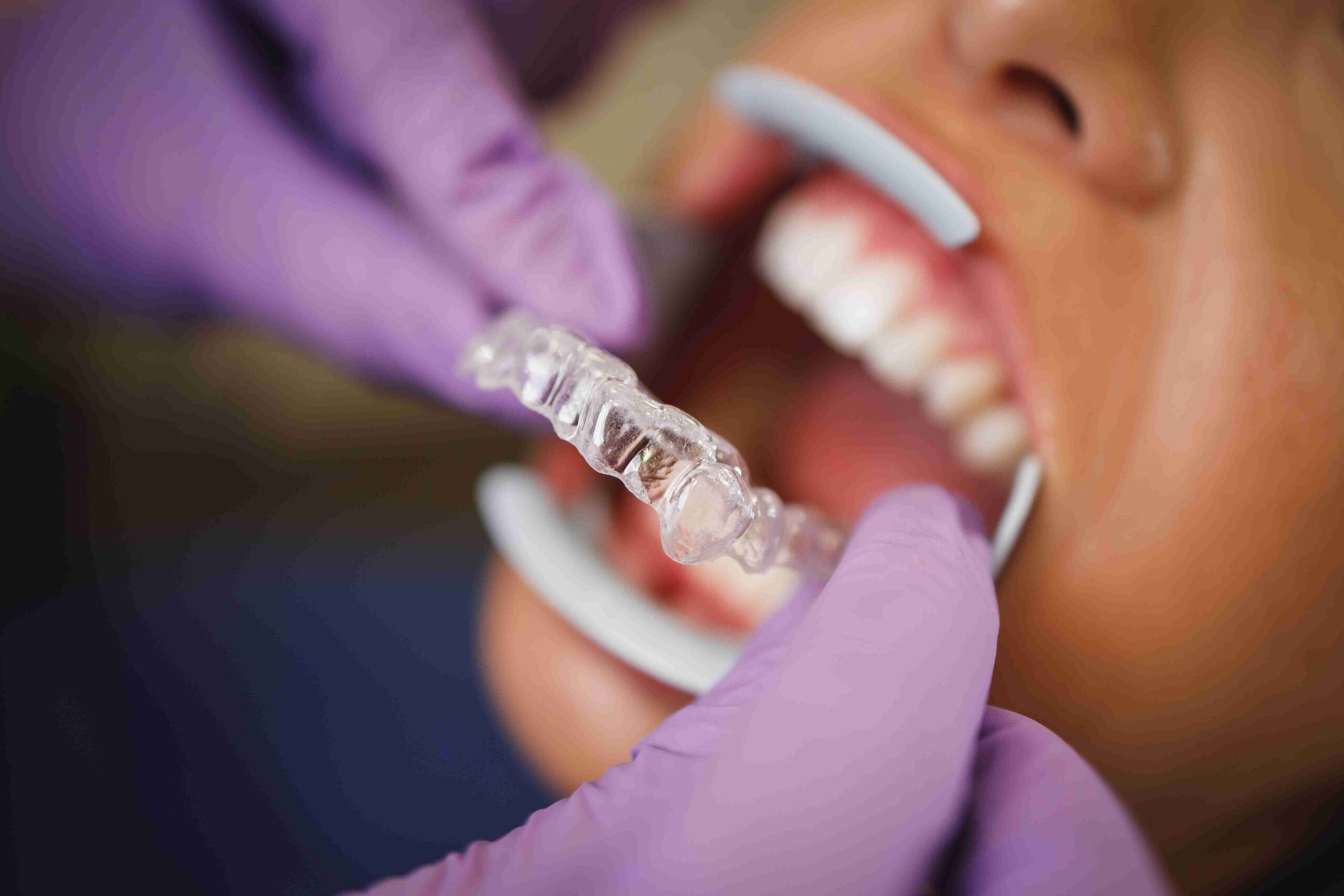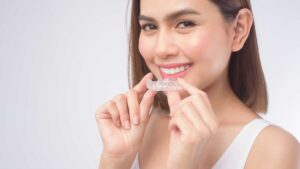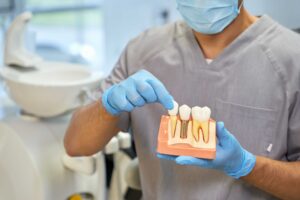Understanding Invisalign and Braces
Invisalign
Invisalign is a cutting-edge orthodontic treatment that uses a series of clear, removable aligners to gradually shift teeth into their desired positions. Each set of aligners is custom-made to fit snugly over your teeth, exerting gentle pressure to guide teeth movement.
Braces
Traditional braces, on the other hand, involve attaching brackets to your teeth and connecting them with wires. These components work in harmony to create controlled pressure, resulting in gradual movement and alignment of your teeth.
Comfort
Invisalign Comfort
One of the standout features of Invisalign is the level of comfort it offers. The aligners are crafted from smooth, BPA-free plastic, minimizing the likelihood of irritation to your cheeks and gums. Invisalign wearers typically experience less discomfort during the initial adjustment period.
Braces Comfort
While advancements have improved the comfort level of braces, the presence of brackets and wires can still lead to some initial discomfort. However, many patients find that the discomfort diminishes as their mouths adjust to the braces.
Aesthetics
Invisalign Aesthetics
Invisalign aligners are virtually invisible, making them an attractive choice for those who value aesthetics. They offer a discreet way to undergo orthodontic treatment without drawing attention to your teeth.
Braces Aesthetics
Traditional braces have evolved over the years, offering more discreet options such as clear or tooth-colored brackets and wires. While they are less noticeable than they used to be, they are still more prominent than Invisalign aligners.
Convenience
Invisalign Convenience
The convenience of Invisalign lies in its removable nature. You can easily remove the aligners before meals, allowing you to enjoy all your favorite foods without restrictions. Additionally, maintaining proper oral hygiene is simple, as you can brush and floss your teeth without obstructions.
Braces Convenience
Braces are fixed to your teeth, which can make cleaning and eating a bit more challenging. There are dietary restrictions to prevent damage to the wires and brackets, and thorough brushing and flossing require more effort to ensure optimal oral health.
Treatment Duration
Invisalign Treatment Duration
The duration of Invisalign treatment varies depending on the complexity of your case. On average, treatment with Invisalign takes around 12 to 18 months. However, some cases may take longer or shorter periods.
Braces Treatment Duration
Traditional braces also typically require a similar treatment duration of 12 to 24 months, depending on the individual case. Complex cases might require a longer treatment period.
Oral Hygiene
Invisalign Oral Hygiene
Maintaining proper oral hygiene with Invisalign is relatively straightforward. Since the aligners are removable, you can continue your regular brushing and flossing routine without obstruction. This reduces the risk of cavities and gum problems during treatment.
Braces Oral Hygiene
Proper oral hygiene with braces requires extra care. Cleaning around brackets and wires can be challenging, but tools like interdental brushes and floss threaders can help reach tight spaces and ensure thorough cleaning.
Eating Habits
Invisalign Eating Habits
With Invisalign, you won’t need to alter your eating habits. Simply remove the aligners before meals and enjoy your favorite foods without worrying about damaging any components.
Braces Eating Habits
Braces come with dietary restrictions to prevent damage. Sticky, hard, and crunchy foods should be avoided to prevent bending wires or loosening brackets.
Cost Considerations
Invisalign Costs
The cost of Invisalign treatment can vary based on factors such as treatment duration and complexity. Our orthodontic team can provide you with a personalized estimate during your consultation.
Braces Costs
Like Invisalign, the cost of braces varies. Factors such as the type of braces, treatment duration, and any necessary adjustments can influence the total cost.
Suitability for Different Cases
Invisalign Suitability
Invisalign is suitable for a wide range of orthodontic issues, including mild to moderate misalignments. Complex cases may require a combination of Invisalign and other orthodontic solutions.
Braces Suitability
Traditional braces are effective for addressing various orthodontic problems, including severe misalignments, bite issues, and complex cases that require precise control.
Follow-up and Monitoring
Throughout your orthodontic journey, regular follow-up appointments are crucial. Our experienced orthodontic team will monitor your progress, make necessary adjustments, and ensure that your treatment stays on track toward achieving your desired results.
Frequently Asked Questions (FAQs)
Which option is more comfortable?
Invisalign aligners are generally considered more comfortable due to their smooth surface and lack of wires and brackets. However, discomfort from braces typically diminishes over time.
Can I eat normally with Invisalign?
For optimal results, Invisalign aligners should be worn for 20-22 hours a day. You can remove them for eating, drinking, and oral hygiene.
How often do I need to wear Invisalign aligners?
Yes, modern cosmetic dentistry prioritizes natural-looking results. Dental materials and techniques are designed to mimic the appearance of natural teeth, ensuring a seamless blend with your smile.
For optimal results, Invisalign aligners should be worn for 20-22 hours a day. You can remove them for eating, drinking, and oral hygiene.
Are braces noticeable? Traditional braces are more noticeable than Invisalign aligners, especially with the availability of clear or tooth-colored brackets and wires.
Which option is best for complex cases?
Both Invisalign and braces can address complex cases. Your orthodontist will recommend the best option based on your individual needs.
Are follow-up appointments necessary?
Yes, regular follow-up appointments are essential for both Invisalign and braces to monitor progress and make any needed adjustments.
Improve Your Oral Health With Hedgecock Dental
Hedgecock Dental is available for all of your family dentistry needs. Our dental office in Austin, TX provides general, sedation, restorative and cosmetic dentistry to patients of all ages.
Conclusion
At Hedgecock Dental, we prioritize your comfort and convenience during your orthodontic journey. Both Invisalign and braces offer unique benefits, and the choice ultimately depends on your individual preferences and orthodontic needs. If you’re ready to embark on your smile transformation, schedule a consultation with our expert orthodontic team. We’ll work closely with you to determine the ideal treatment option and guide you toward achieving the smile you’ve always wanted.
References
National Institute of Dental and Craniofacial Research (NIDCR):The NIDCR offers a wealth of resources on dental health, including articles and research related to dental implants, osseointegration, and advancements in dental implant technology.
U.S. Food and Drug Administration (FDA):The FDA provides information on dental devices and implants, including regulatory information, safety considerations, and updates on approved implant materials.
Centers for Disease Control and Prevention (CDC) – Oral Health:The CDC’s Oral Health section covers various topics related to dental health, including information on dental implants, their benefits, and considerations for patients.





